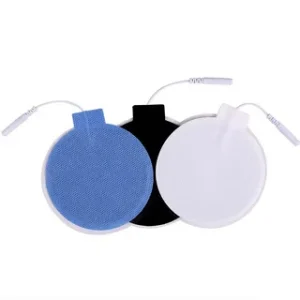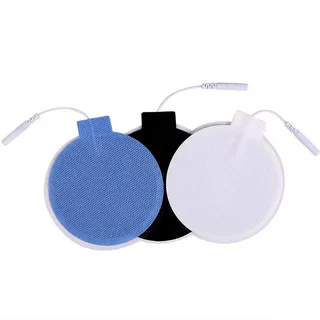TENS Therapy Made Better: Key Insights on Electrode Gels and Gel Pads

The gels are designed to create strong and stable adhesions between electrodes and the skin so that the results can be recorded optimally. Electrode adhesive gel is of great importance in various therapeutic and diagnostic applications where it forms an integral part of its proper use in devices like TENS units. Whether you are a clinician who uses these devices on a patient applying these products for pain relief or muscular stimulation, the proper adhesive gel applied to the electrodes can make an enormous difference in the nature and quality of the intervention. Here is an all-inclusive overview of the relevant aspects, insights into products, proper usage, and maintenance guidelines.
1.Role and Importance of Electrode Conductive gel
electrode conductive gel is a conducting medium that connects the electrodes with the skin through which this therapeutic device works. First, this is a primary conductive path for the conducting of electric currents. It means that the TENS gadget will be able to stimulate the nerves more profoundly and deliver more desired impacts in terms of pain relief or therapy. The gel is also an adhesive that helps hold the electrodes in place, especially when applied to areas that frequently move. Good quality adhesive gel ensures that electrodes do not peel off during treatments that require extended use, such as chronic pain management.
2.Important Characteristics to be Found in Electrode Conductive Gel
Several features must be considered when choosing an adhesive gel for electrodes, such as:
– Conductivity: The gel must provide high conductivity to enable the electrical impulses of the TENS device to flow well into the skin. The higher the conductivity, the better the treatment, especially for pain relief and muscle stimulation.
– Adhesive Strength: It should have strong adhesion; it will tightly stick to the skin to stay in position when the patients are sweating or moving; during those instances, any slight movement of the gel will provide ample adjustment during therapy sessions.
– Skin Compatibility: The gels are constantly in contact with the skin; therefore, they have to be hypoallergenic and sensitive skin-friendly. Some are designed to limit or minimize rashes and irritation. This would be important for sensitive skin types.
– Long-term and durable – The adhesives have to endure their adhesive action for the entire duration of treatment. At times gels are formulated to be used only once while other types have the possibility of multiple usages to make it practical for subsequent therapies.
3.What are some of the options for TENS electrode conductive gels
There are several types of electrode conductive gel. They come in different forms, each suited to fit certain therapeutic requirements. There are types of TENS electrode adhesive gel that would make it possible to select with one’s therapy needs:
Hydrogel-Based Adhesives: Hydrogel formulations are preferred for TENS electrodes, which have high moisture content for adhesion and conductivity. These are well-suited to TENS therapy, causing less irritation, and are reusable numerous times before being replaced. Hydration of the skin benefits more, as there is much less irritation to the skin when the therapy lasts a long time.
– Liquid Gels: These liquid electrode gels are used mainly for targeted applications where accurate control over conductivity is required. Being a product that is supposed to be applied through a person’s intervention, liquid electrode gels are the most flexible product as they may be used in controlled quantities while helpful in TENS units, among other diagnostic appliances for which electrode placement becomes obligatory.
These are made from several types which find individual applications along with associated benefits. Due to which mainly preference of users and therapies for selection lies.
4.How to Use and Store TENS Electrode Gel Electrode Gels
Treat them right by following the advice below if you are getting the most out of these electrode adhesives or gel electro-des adhesives.
Clean the area of the skin. The area in which the electrode is to be placed should be free from oils and lotions, or even sweat that may hinder the sticking of the gel in that particular area. A mild cleanser can prepare the skin for electrode placement in general.
Liquid gel applications should be given a thin, uniform layer. Apply the small quantity directly to the electrode or the skin. Do not over-apply so that it doesn’t slide around, as well as to prevent sticking.
– Store properly: TENS electrode conductive gels are sensitive to temperature and light. To preserve the adhesive as well as the conductive properties, it should be stored in a cool dry place. Most gels are resealable to preserve the integrity of the gels and prevent drying out.
– Replace When Needed; there are one use gels, but a reusable hydrogel pad type or based adhesive can be used on several occasions while still not having the same as when initial adhesion is good; you’ll then know you need to either replace a gel or if using an adhesive-based with gel or hydrogel for the best results, as quality matters in therapy.
5.Advantage of the Use of TENS Pads on Therapy
Pre-gelled gel pads on TENS can provide quite several benefits in supporting an improved TENS therapy experience. Here’s how it impacts experience and outcome:
Convenience- Gel pads may be pre-gelled. So, they may provide cushioned relief at areas that might be peculiarly sensitive, thus providing applicability to extended usage with minimum risks of skin irritation.
Ease of use: In pre-gelled TENS pads, the user will not have to contend with finding space to apply any gel since the pad will already be prepared. This thus becomes a convenient product. This is useful for the client who applies the device for home use.
Conclusion
Selection of the appropriate electrode adhesive gel for a TENS unit is one important step, and this could ensure your therapy for both comfortable and effective at the same time.
This difference would make a lot when considering the gels right to your therapy- higher conductivity, and adhesion. Different gels can range from adhesives of the hydrogel-based types to gel pads and conductive to the liquid gel varieties; differences between the types can provide choices to users, whether according to needs and tastes, to decide for which would be most fitting to one’s preferences. And as much as they say usage and maintenance could have to do with a significant factor in making most benefits possible. If you require sessions that are frequent and long, opt for high-quality TENS gel pads or other adhesive gels.
A good quality adhesive gel will prevent the slipping of electrodes and ensure electric stimulation is delivered consistently in a manner that will not irritate the skin for an effective and comfortable outcome. Achieve all your TENS unit benefits if you use the right adhesive gel for maximum effects of pain relief or treatment. Be it TENS for chronic pain, muscular stimulation, or rehab – good quality electrode conductive gel may be very important for good results in most cases.

